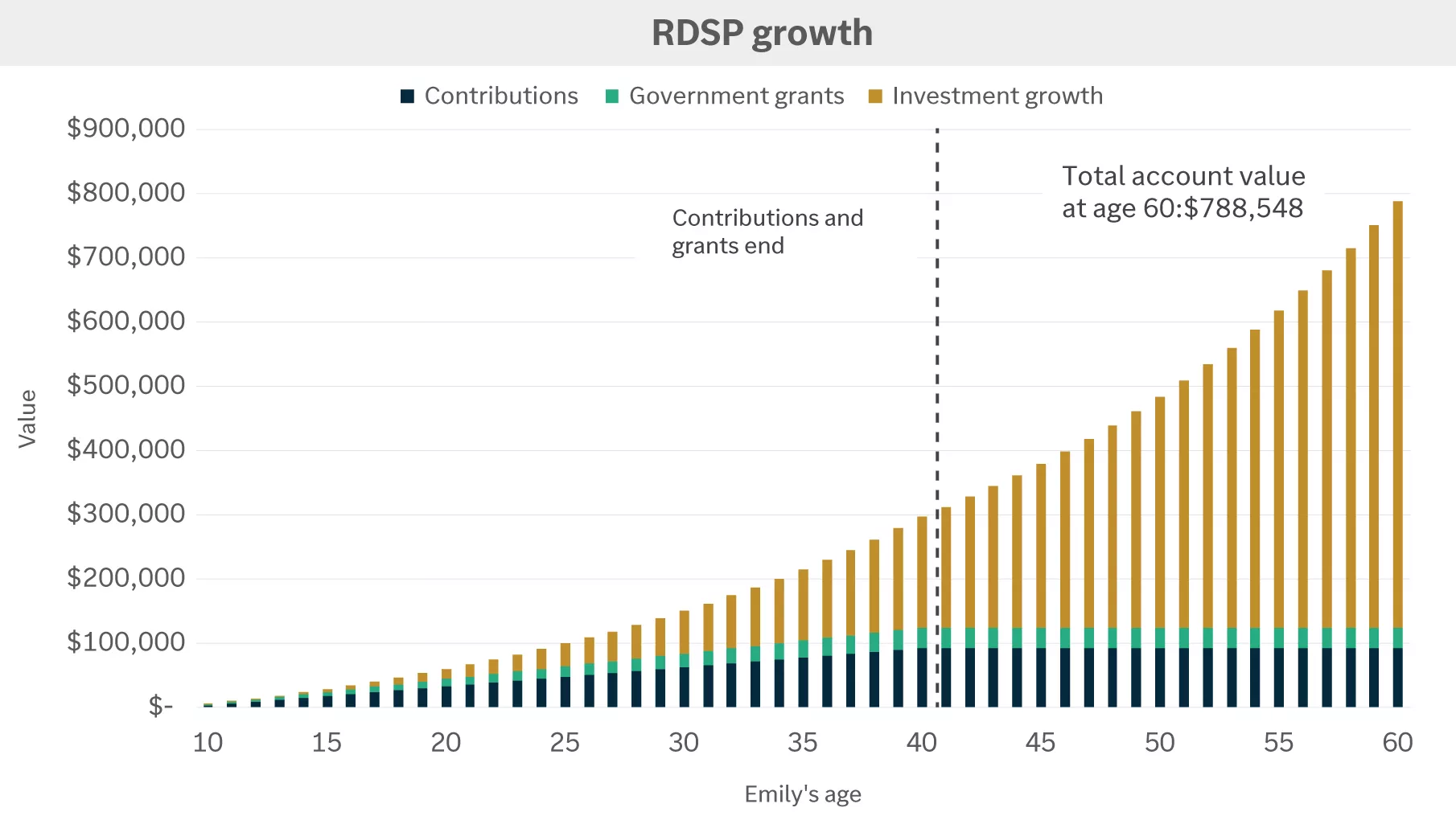Funds from a Registered Education Savings Plan (RESP) can be transferred into an RDSP if the plan beneficiary is not expected to pursue post-secondary education, provided their situation meets specific conditions. This transfer is also called a rollover. The government does not pay matching grants on amounts transferred from an RESP to an RDSP.
To be eligible, the beneficiary must be:
- a resident in Canada
- approved for the DTC
- aged 59 or younger on December 31st the year of the rollover
Visit the Government of Canada’s website for more information about RDSP rollover rules.
Transferring funds into an RDSP is called a rollover. Amounts from a registered retirement plan, like a Registered Retirement Saving Plan (RRSP), Registered Retirement Income Fund (RRIF), and registered pension accounts, may be rolled over into an RDSP following the death of the beneficiary’s caregiver parent or grandparent. To be eligible for a rollover, the beneficiary must be:
- a resident in Canada
- approved for the DTC
- aged 59 or younger on December 31st the year of the rollover
- financially dependent on the parent or grandparent who has passed away
Visit the Government of Canada’s website for more information about specific rules and conditions for RDSP rollovers.
RDSP withdrawals do not affect the beneficiary’s eligibility for federal government benefits, but some provincial government benefits may be affected. Check with your provincial government for more information.
Who is eligible for the Disability Tax Credit (DTC)?
To qualify for the federal Disability Tax Credit, you must meet specific criteria that demonstrate a severe and prolonged impairment, more than one significant limitation, or a vital function that requires support. Visit the Canada Revenue Agency website for more details about DTC criteria.
How do I apply for the Disability Tax Credit (DTC)?
To apply for the DTC, a medical practitioner must certify that the individual applying meets the criteria. You can then submit your application online or mail in a paper form. Visit the Canada Revenue Agency website for more details about applying for the DTC.
What happens to the RDSP if the beneficiary loses their Disability Tax Credit?
Many people are only approved for the DTC for a number of years. If the beneficiary loses their DTC approval, the plan holder can close the plan or keep it open.
If the plan is kept open, you won’t be able to make further plan contributions or receive any new grant and bond contributions. Any rollovers from a deceased parent or grandparent’s registered retirement savings must be made within 4 years of losing DTC approval.
If payments are withdrawn from the plan before the beneficiary turns 60, any grants and bonds received within the 10 year-period before losing DTC approval will need to be repaid.
If the beneficiary is re-approved for the DTC, you can start saving in the plan again.
More details are available at the Government of Canada’s website.
How much could I receive in government grants or bonds?
The amount of grants or bonds you’ll receive depends on your family’s annual income. You can estimate your grant and bond payments using this calculator at the Government of Canada’s website.
Can I catch up on past grants or bonds?
Unused grant and bond entitlements can be carried forward for up to 10 years. This means that if you generate unused grant or bond contribution room, you have up to 10 years to make catch-up contributions.
Visit the Government of Canada’s website for more information about RDSP grant and bond carry-forward rules.
When can I withdraw from my RDSP without penalty?
If you have received RDSP grants or bonds, you must wait 10 years from the date of the last contribution before withdrawing in order to avoid repayment penalties.
If you are under age 60 and withdraw funds from the RDSP within 10 years of receiving a grant or bond, you will need to repay $3 of grants and bonds for every $1 you withdraw, up to the total amount of grants or bonds you received in the last 10 years. The 10-year repayment rule does not apply if the beneficiary is age 60 or older or if the beneficiary has a reduced life expectancy of 5 years or less.
From age 60 onwards, the 10-year repayment rule no longer applies. Visit the Canada Revenue Agency website for more details about the 10-year repayment rule.
